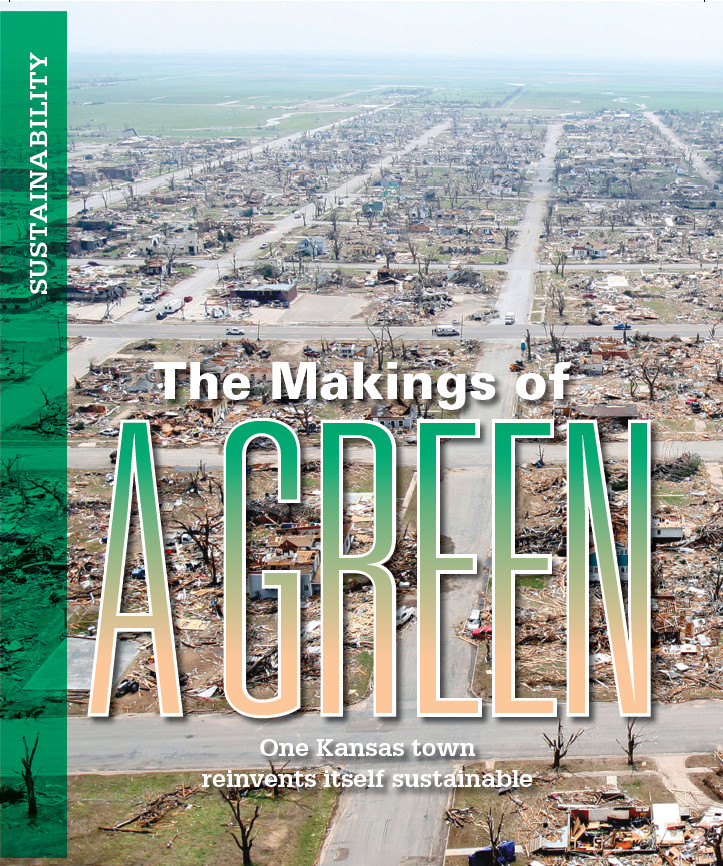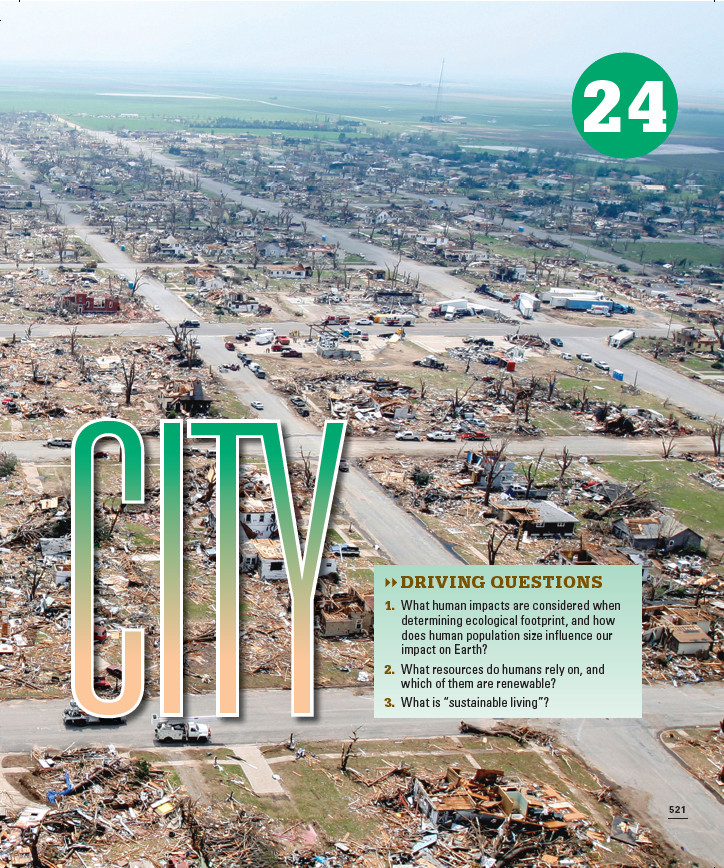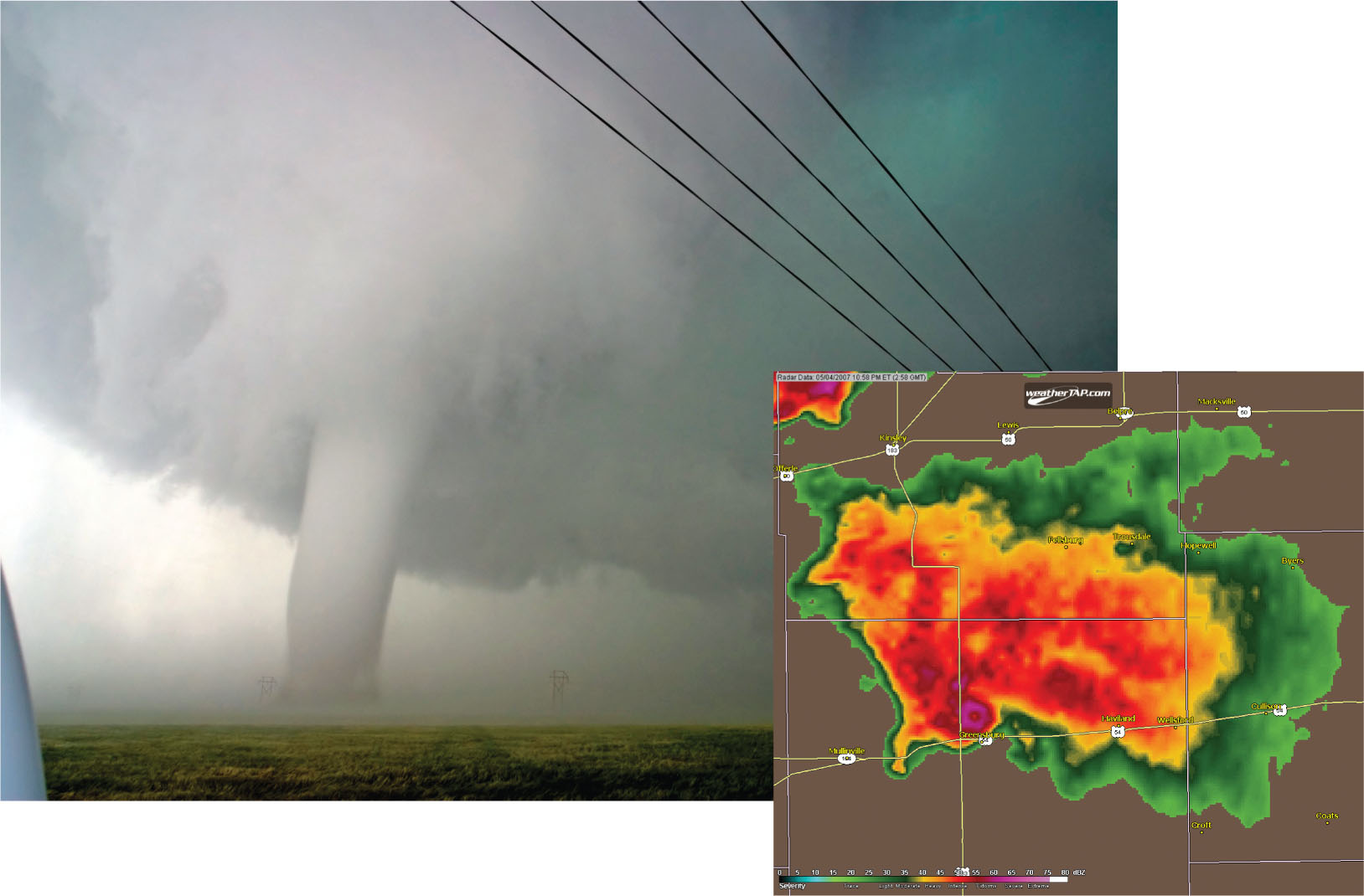


 DRIVING QUESTIONS
DRIVING QUESTIONS
- What human impacts are considered when determining ecological footprint, and how does human population size influence our impact on Earth?
- What resources do humans rely on, and which of them are renewable?
- What is “sustainable living”?
In-Class Activity
Click here to access Lecture ppt specifically designed for chapter 24.
Click here to access Clicker Questions specifically designed for chapter 24.
 N THE NIGHT OF MAY 4, 2007, AT 9:50 p.m., A MAMMOTH EF-5 TORNADO roared through the small town of Greensburg, Kansas. Nearly 2 miles wide–wider than the town itself—with winds topping 200 mph, the twister was one of the largest ever recorded. Once the warning sirens sounded, residents had about 20 minutes to retreat to their storm cellars before the raging monster was upon them.
N THE NIGHT OF MAY 4, 2007, AT 9:50 p.m., A MAMMOTH EF-5 TORNADO roared through the small town of Greensburg, Kansas. Nearly 2 miles wide–wider than the town itself—with winds topping 200 mph, the twister was one of the largest ever recorded. Once the warning sirens sounded, residents had about 20 minutes to retreat to their storm cellars before the raging monster was upon them.
“The sound was like a jet engine going right over us, about to take off,” wrote Megan Gardiner, then a high school senior, in a personal account of the storm published by the Wichita Eagle. She and her family huddled in their basement, ears popping, listening helplessly as first windows exploded and then nails were sucked out of walls with a rhythmic high-pitched screech. “Just hearing the house rip into shreds was horrible.”
The ordeal lasted 10 long minutes. When the ferocious funnel had finished churning, 11 people had died. People emerged from their storm cellars to find the homes above them gone. Fully 95% of the buildings in town–961 homes and 110 businesses–were leveled. The town of Greensburg had been wiped off the map.
Before the tornado hit, Greensburg was a struggling farming town of about 1,300, its population shrinking every year as people left the town for brighter horizons. (A reporter for the New York Times once quipped that the town’s biggest export was its young people.) After the disaster, the people of Greensburg were faced with a stark choice: abandon the town or rebuild?
Many residents, unable to face the prospect of another tornado, chose to leave.
Others took a wait-and-see attitude. But for town administrators, who had for years been searching for ways to breathe life back into Greensburg, the tornado offered them a rare and unlikely opportunity to start over from scratch.
“We can paint this community any way we want,” City Administrator Steve Hewitt, whose own home was destroyed, told the mayor the day after the storm. “It’s a blank canvas.”
 In its simplest sense, sustainability is just doing things today to ensure a vibrant successful future for others.
In its simplest sense, sustainability is just doing things today to ensure a vibrant successful future for others.
— STACEY SWEARINGEN WHITE
